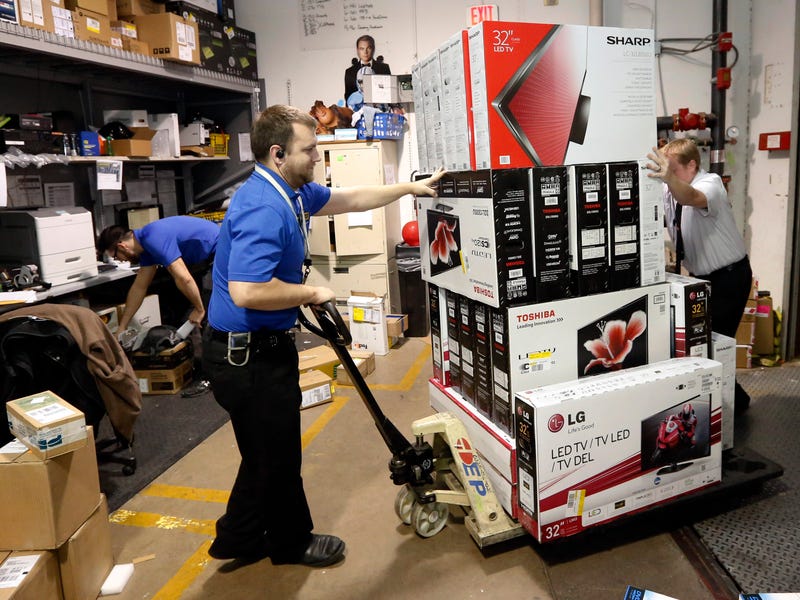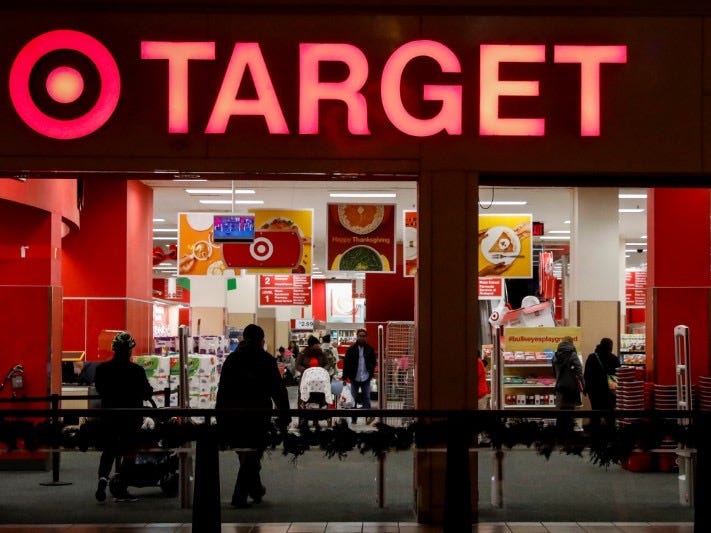The usual Black Friday experience of long lines and 3 a.m. store openings is sure to look different this year.
Retailers have to make shoppers feel safe with coronavirus precautions while also dealing with ongoing inventory issues and customers who might be less willing to spend in the midst of a recession. Three of the most popular Black Friday destinations — Walmart, Best Buy, and Target — have all released their plans for the shopping holiday this weekend.
Here’s how they compare.
Walmart.

Walmart is starting Black Friday sales online at 7 p.m. on November 4, with “Black Friday Deals for Days.” The sales will start in-store on November 7 at 5 a.m.
Deals will be centered on toys, electronics, and home products, and include Walmart’s annual tire event with deals on Goodyear tires. Walmart’s electronics deals will work the same way the next week, with online deals starting the evening of November 11, and moving in-store early November 14. The third week will have deals on electronics, apparel, and home decor.
For all in-store sales, Walmart will keep the number of customers inside limited to allow for social distancing. Shoppers will each get a sanitized cart upon entry, and “Health Ambassadors” will remind them to wear masks.
“By spreading deals out across multiple days and making our hottest deals available online, we expect the Black Friday experience in our stores will be safer and more manageable” executive vice president Scott McCall said in a statement.
Best Buy

Best Buy offered up a similar plan, with short sales throughout November with names like The Wish List Sale. Then on November 22, all Black Friday deals are available.
The store will be closed on Thanksgiving, and open at 5 a.m. on Black Friday. Like Walmart, Best Buy will require customers to wear face masks and limit the number of shoppers inside.
Best Buy is offering contactless curbside pickup, along with in-store pickup. Walmart will also have curbside pickup, but Best Buy is emphasizing its delivery options more.
Best Buy says “almost all” stores will have same-day delivery, and free next day delivery will be available across the country. Prime Day and early holiday sales have increased mail volumes and added stress to the already overwhelmed USPS and Best Buy planners seem to have taken this into account, allowing buyers to pick up orders at UPS and CVS locations across the US.
Target

Like the other big retailers, Target is extending Black Friday.
Some deals are already in effect, with sales in different areas each week of November, called “Black Friday Now.” Deals will be announced each Thursday for the following week. In-store and curbside pickup will both be available at Target, plus same-day delivery on some items with Shipt.
With Black Friday deals more spread out than ever, Target’s price match guarantee could be useful. Buyers can ask for a price adjustment for any deal offered at a lower price at Target, or at certain competitors’ through Christmas.
Three stores, three different Black Friday pandemic approaches
All three giant retailers have adopted similar strategies for accommodating Black Friday in the COVID era, although each chose to focus on a different aspect. The biggest change over previous years is that sales will be spread across the month, instead of packed into one day. Deals will be divided by type of product, so electronics shoppers won’t have to fight with home goods buyers and parents picking up last-minute toys.
Walmart’s statement focused on how it will make stores safe, with measures like sanitized carts and advisors to make sure mask and social distancing rules are followed.
Best Buy, and to a lesser extent Target, focused statements on options to get orders without going inside stores. That may be appealing to customers who want to avoid crowded stores during a pandemic, though it could backfire if the mail system is overwhelmed as predicted, and packages don’t arrive when they are promised.
The retailers all seem to be responding to consumer demands. Nearly 69% of retailers surveyed by NRF said that they expected consumers to start holiday shopping in October. Overall projected spending is slightly down as consumers plan to spend $997.79 on the holidays this year, but 60% of shoppers say they plan to do at least some holiday shopping online
Analysts from eMarketer predict a total of $1.013 trillion in holiday spending this year, with a slight decrease in in-store sales while online orders jump 35%. As shoppers avoid crowds and are drawn in with month-long sales, e-commerce spending is predicted to make up $190.47 billion of holiday spending, which could exceed the capacity of shipping companies and cause delays.









